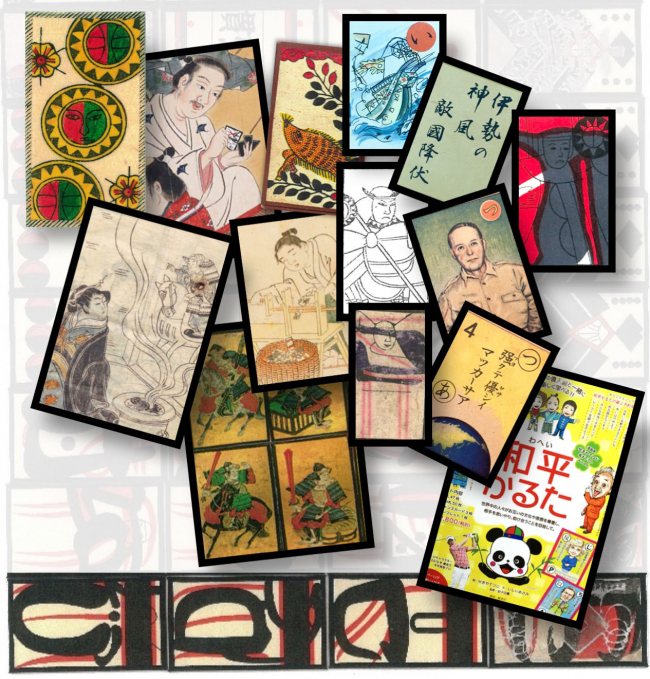VMPEA: Mew Lingjun Jiang

“The Fluidity of Image and Symbol in Karuta Japanese Playing Cards, 1573-Today”
Mew Lingjun Jiang, MAPH-TLO'20 Art History
Respondent: Robert Burgos, PhD student, Department of History
A Pre-circulated paper is available at this link with a password: karuta.་Plenty of Refreshments will be provided.
Abstract: The visual and material developments of ephemera, such as karuta (かるた・カルタ・歌留多・骨牌) the Europe-originated Japanese playing cards, have involved more than what can be observed. Although karuta are meant to be expendable objects, their material varieties include gold-leafed, hand-painted, woodblock-printed, and color-stenciled cards, made by detailed outlining and careful coloring, sometimes with abstractive designs and a calligraphic touch in bold contrast, leaving traces of illustrative depictions in artworks and artifacts. However, most of the research on karuta, especially of the regional patterns, is rule-oriented through a lens of gaming and gambling studies, and the variations in the abstractive and expressive design of these playing cards have long been a mystery.
The visual and material study of the continuously changing message carried by karuta takes us back to the everyday life in the past and connects us to the future discussion of art, games, and the relationship between humans, images, and things. Based on current studies of the cultural history of karuta written in Japanese, and adding to the limited research written in English, this paper describes and explains the fluidity of images and symbols of karuta as cultural icons, as well as the visual history of their artistic depictions, curious designs, and regional patterns from the Tenshō era (1573-92) to the present day.
About VMPEA: The Visual and Material Perspectives on East Asia Workshop is oriented toward the study of visual and material objects, built environments, and the relationship between text and image from East Asia. It explores a plethora of visual and textual materials across a variety of historical periods and geographic locations in order to understand socio-political, cultural, and historical aspects of China, Japan, and Korea. While being based in art history, the Workshop is committed to interdisciplinary inquiries and perspectives, including but not limited to archaeology, anthropology, architecture, literature, religion studies, cinema and media studies, and museum studies. With visual evidence as the basis of our inquiries, our workshops are opportunities for collaborative examination and discussion of these vital materials. As such, we offer speakers the opportunity for open-ended exploration and discussions of the presented materials, in addition to the traditional formats of pre-circulating papers and respondents. This kind of collaborative “thinking through materials” is crucial to visual and object-based study, and we are renowned even among scholars outside of the University for our rigorous discussion sessions. While the Workshop invites outside speakers as an opportunity to encourage intellectual exchanges between students and established scholars, graduate students from the University are prioritized in our program. Recent visitors have included Stanley Abe, Zhang Jianyu, Huiping Pang, Yukio Lippit, Corey Byrnes, Deng Fei, Noriko Murai. In addition, the Workshop is a forum for joint-workshops, interdisciplinary and cultural events related to East Asian topics.